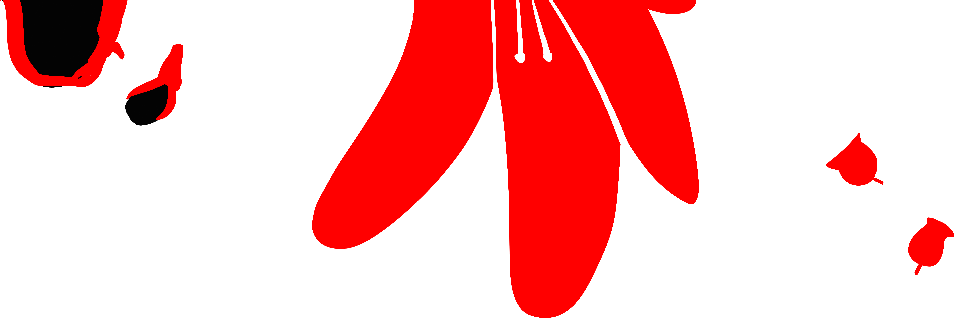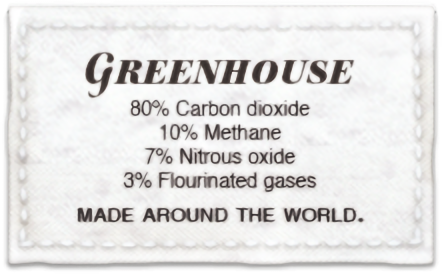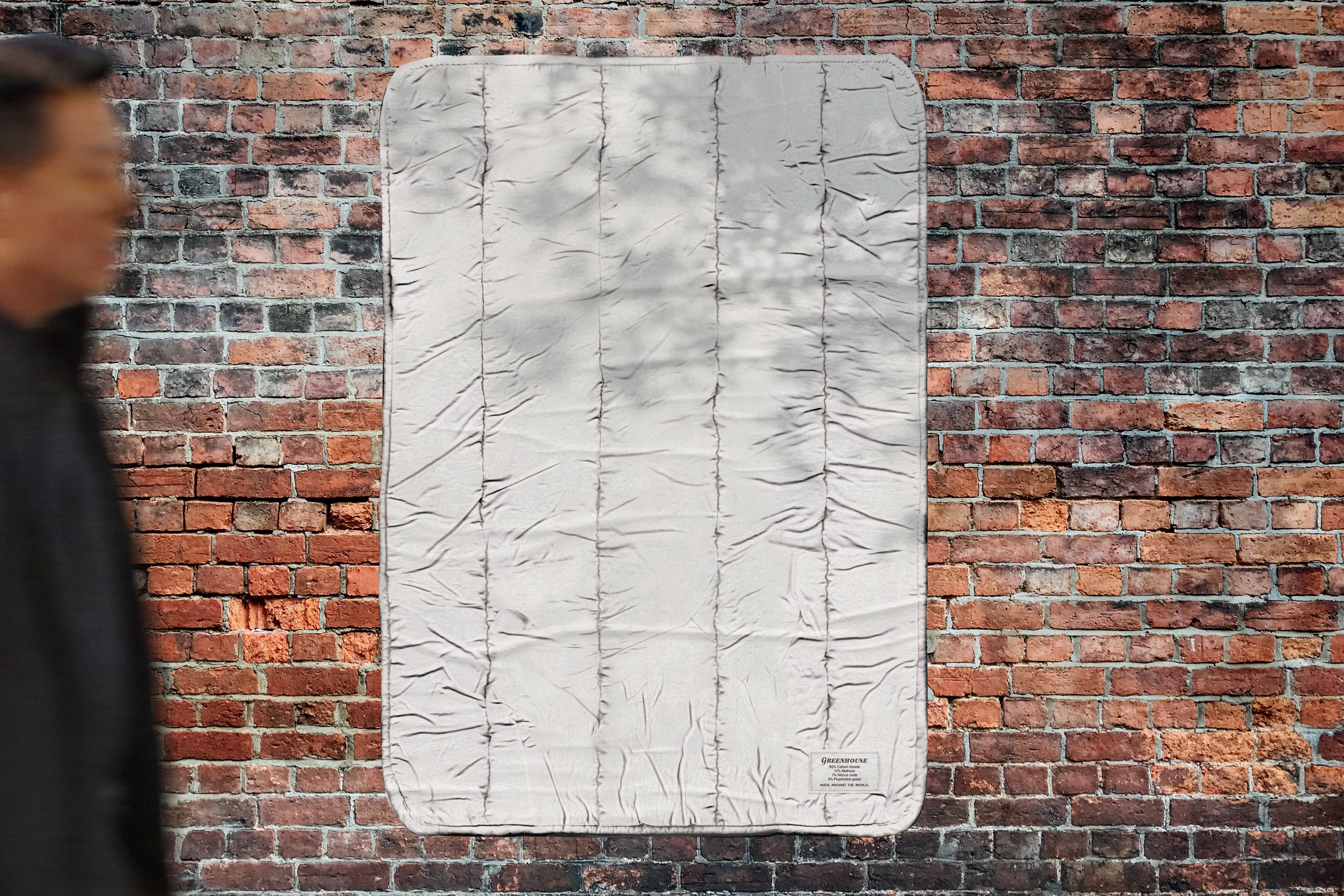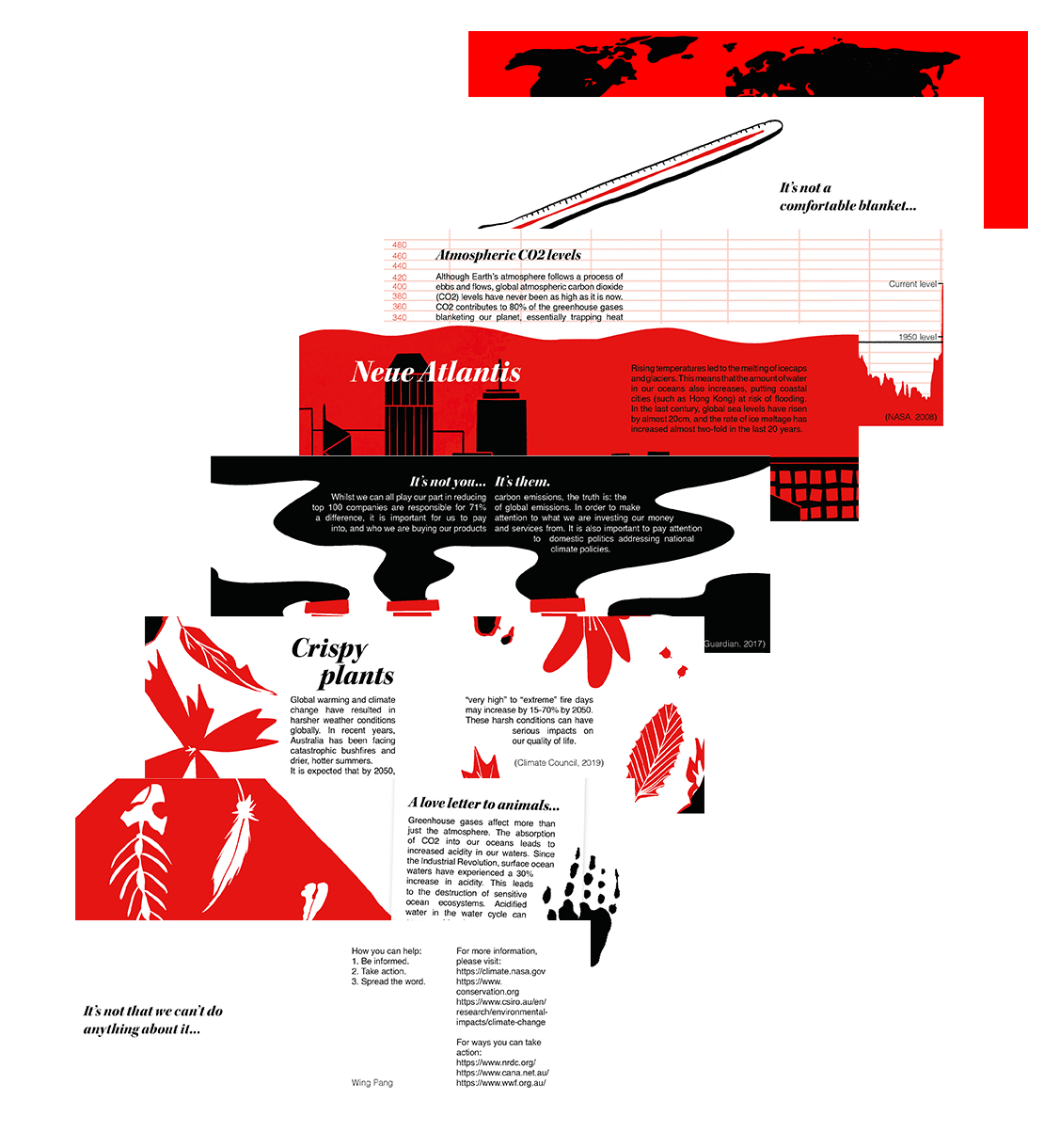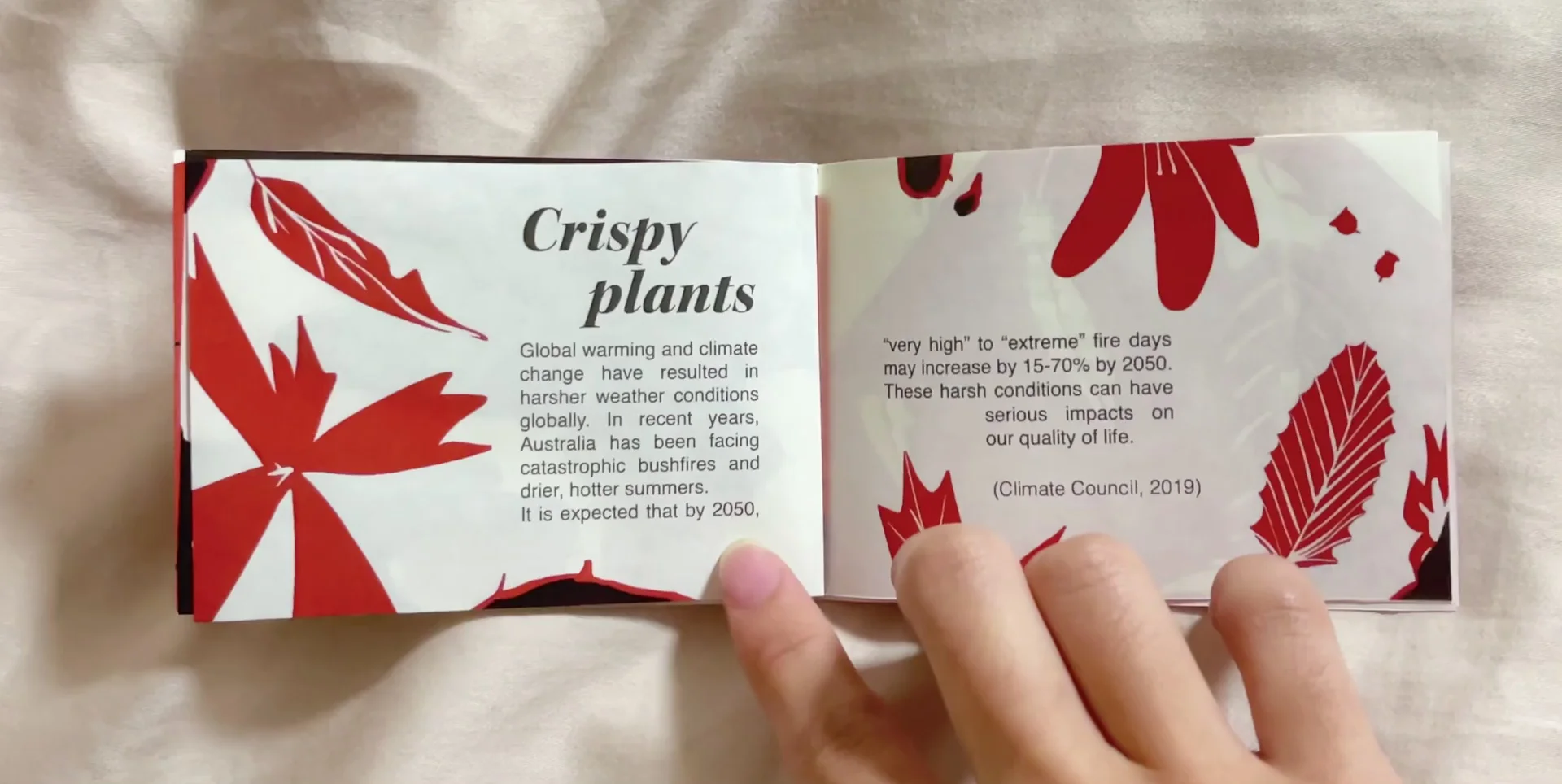The most important question that I asked myself throughout the process of ideation
was:
How can I (as a designer) make a difference in the current climate catastrophe?
The answer that I came to was that people must be educated about the gravity of
the
situation, as well as given a means to take action in an approachable and
easily digestible way.
Without knowing the repercussions of human activity on our planet, there would be no
incentive to take action.
Without providing starting points to creating change, people may feel helpless or
unsure
about how they can make contribute to a better future.
All of this information must also be delivered in a way that doesn't invoke hysteria
-
that change is possible, and that our planet isn't destined for doom.
In order to address all three criteria , I decided that my project will have:
- Reliable information from academic sources.
- A distinct call-to-action with links to climate organisations.
- Simple language and visually engaging layouts/content.
After establishing the criteria of success for my project, I began brainstorming an
individual topic (within the broad category of climate change) that my project will
explore.
In the end, I've decided to focus on the topic of global warming as a result of
anthropogenic CO2 emissions.
I wanted my poster to pull the audience in, while the zine informs them about the
context of the poster.
A couple of topics I initially wanted to dive into more for the zine included:
- Melting icecaps.
- Increased intensity and frequency of bushfires.
- Current CO2 statistics.
In order to have reliable information as foundation of my project, a lot of research
was
done through scientific and academic sources. One of the starting points I used to
find
the impacts and current statistics of global warming was the NASA Climate Change and Global
Warming
website (NASA, 2021). This website provided me with the graph indicating CO2 levels
overtime used in the second spread. It also prompted me to explore the issue of
acidification caused by the absorption of CO2 in our oceans
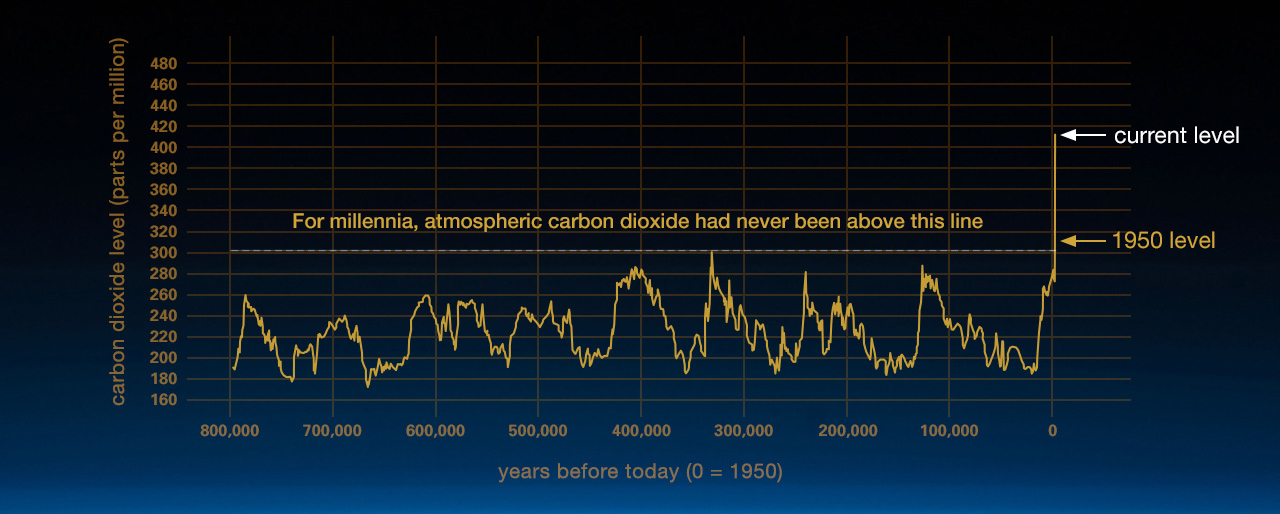
Cropped atmospheric CO2 graph
from climate.nasa.gov (NASA, 2021)
For statistics related to the topic of melting icecaps in spread 3, I used statistics
sourced from the National
Snow & Ice Data Center website which stated that "glaciers fringing
the
Greenland and Antarctic Ice Sheets, contributed 27 ± 22 millimeters to global mean
sea
level rise from 1961 to 2016" (NSIDC, 2019). Meanwhile, statistics related to
increased
severity and frequency of domestic bushfires as a result of global warming (in
spread 5)
was found on the Climate
Council website (Climate Council, 2019). For more information on
acid
rain, I looked at the linked journal article from the NASA climate website from
USGCRP
(Wuebbles et al. 2017).
Upon reading more articles, I also learnt that CO2 contributions from individuals and
domestic activities were quite insignificant compared to emissions from large
companies
(Riley, 2017). Since this is a lesser-known fact, I found it crucial to include in
the
zine to emphasise the importance of speaking out against environmentally unethical
business practices.
By the end of the research process, I've developed five topics to be explored in the
zine:
- Melting icecaps.
- Increased intensity and frequency of bushfires.
- Current CO2 statistics.
- Ocean acidification.
- Importance of lobbying against environmentally unethical corporations.
After researching and settling on five main topics to explore, I began thumbnailing
possible illustrations for the zine spreads and for the poster.
For the first thumbnails I did, the zine was designed in a portrait orientation.
There
were also ideas for additional attachments to the zine such as polaroids and care
tags.
However, since the size of the zine was smaller than originally planned, the
polaroid
cannot fit into the zine. The care tag idea was also scrapped since the A1 poster
could
not physically fold down to become a cover for the A7 sized zine.

Scanned image of the initial
thumbnails.
The following thumbnails explored different poster ideas and added upon the initial
ideas
for the zine spreads. At this stage, I've decided that a landscape orientation
allows
for a better display of text at a small size. The zine layouts from the secondary
thumbnails were essentially the final designs used for the project. Meanwhile, the
poster design have been changed to a portrait orientation to correlate with how
doonas
are laid onto beds. The other illustrative concepts for the poster have been
rejected
due to their tendency to fall under cliche tropes. The scanned doona provides higher
intrigue as the message requires a "second look".

Scanned image of the
secondary
thumbnails.
Experimentation and iteration for this project involved physical material and digital
experimentation.
Physical experimentation involved the exploration of mark-making using ink, as well
as
the use of gouache and watercolour. Originally, the spread with plants was going to
be
made using ink impressions of real plants achieved during experimentation. However,
using traditional medium in only one spread made it visually incoherent, so it was
abolished altogether. Gouache as a medium was difficult to control and the colours
were
also inconsistent. As such, I opted for digital illustration for the entirety of the
zine process, imitating the graphical qualities of block printing.
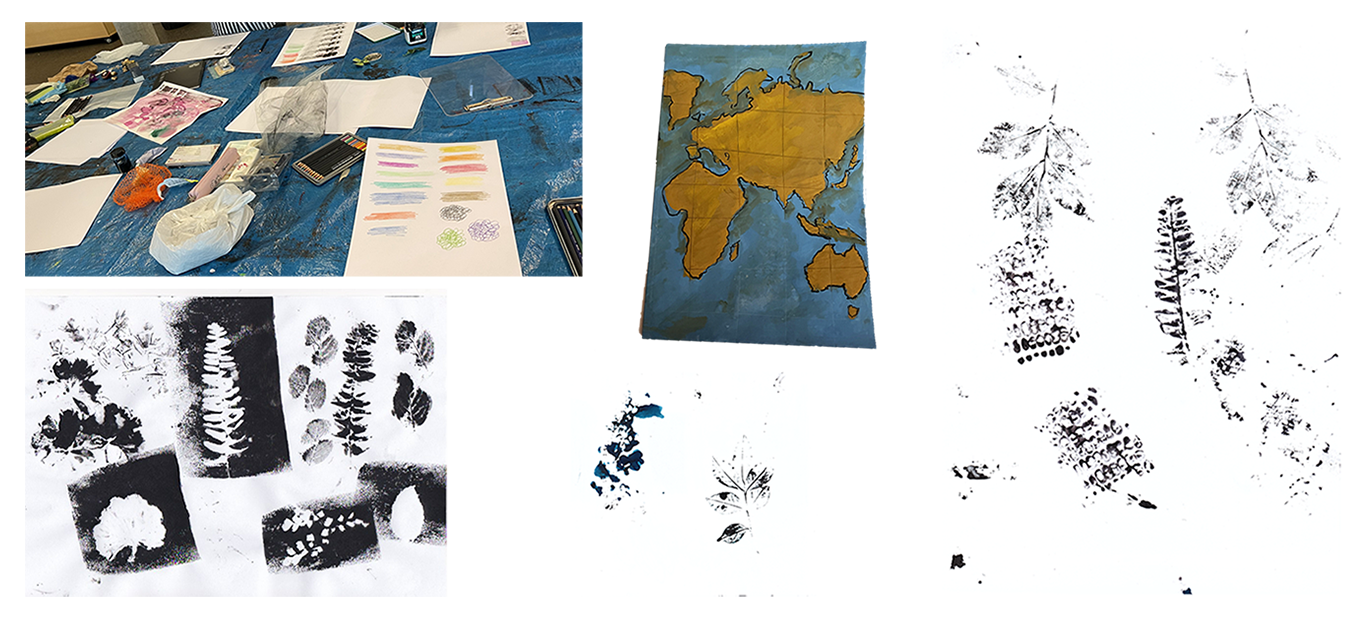
Photograph and scans of the
mark-making process.
Digital experimentation for the zine did not take much time, as I limited myself to a
colour palette of only black and white and red. This is because I felt that this
colour
scheme works well to communicate the idea of heat. I did however, experiment with
alternative colours of the world map used for the zine cover. I chose to go with the
black land and red seas since pollution is often carried out on land but causes the
heating up of ocean waters.
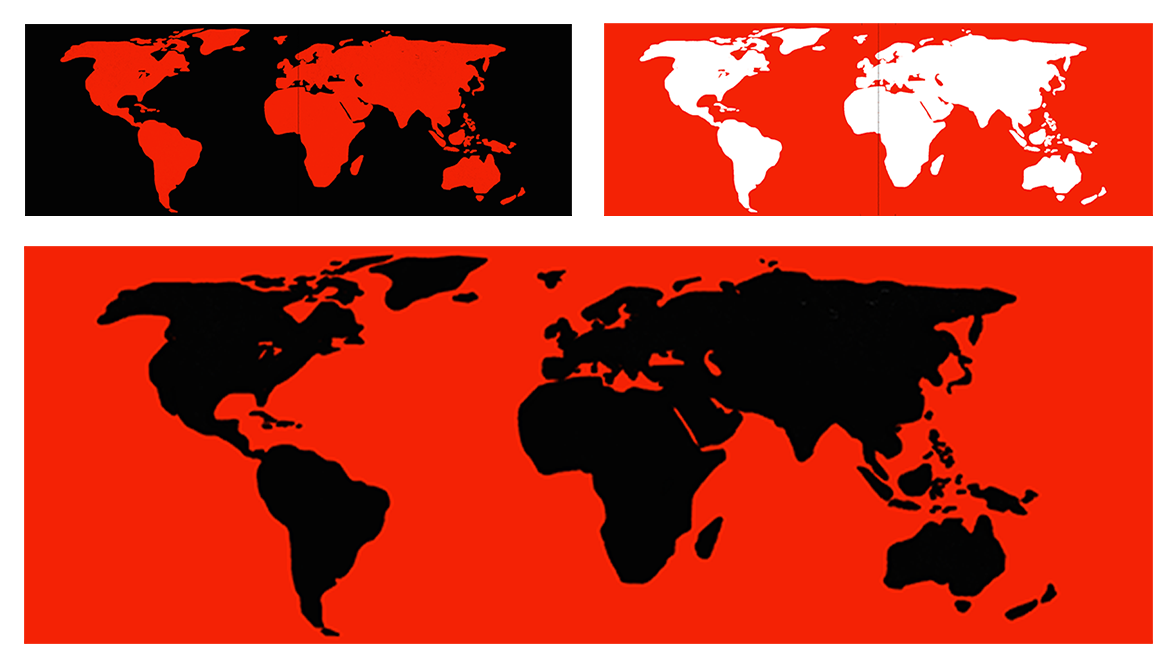
Digital iterations of the zine
cover.
Both the poster and zine required digital construction before printing.
The poster involved me scanning my own quilt and stitching it using the warp tool and
clone stamp tool in Photoshop. I also had to fabricate the label on the poster at
this
stage while deciding what typeface I wanted to use for the rest of the project. The
whole process took around 10 hours and the typeface chosen for the title is Kepler
Std
Bold Italics Display, while the body typeface is Helvetica regular. The label colour
was
changed from brown to white to match the doona's scanned aesthetic.
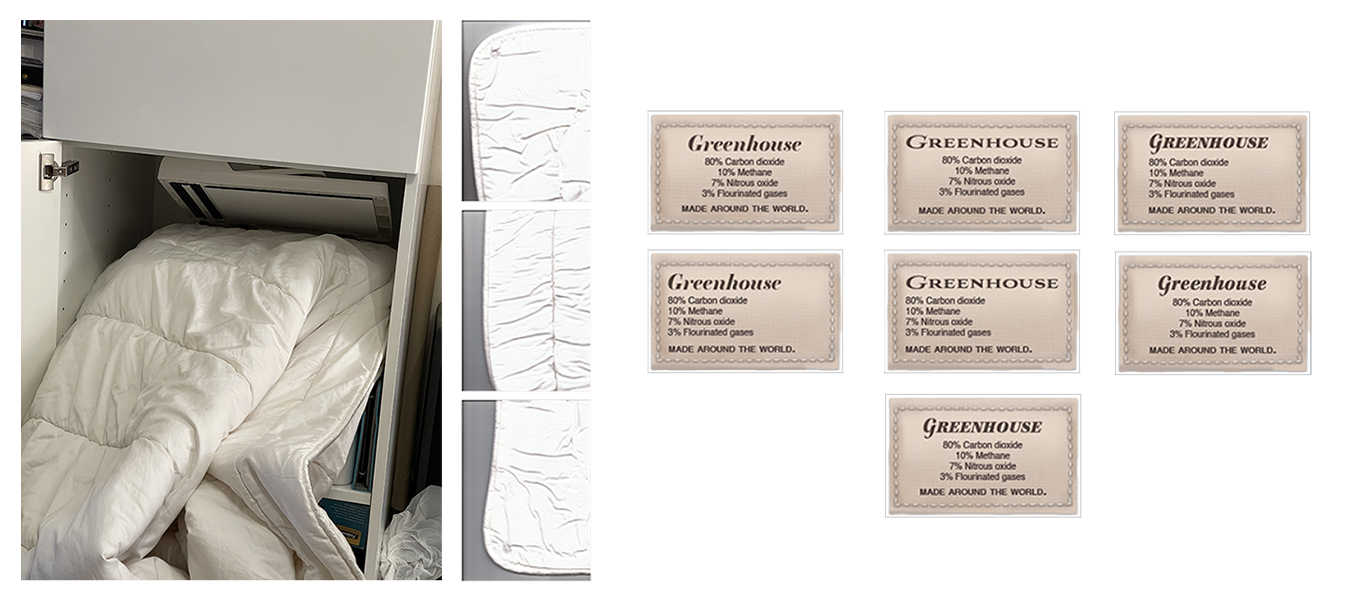
Images of the poster design
process.
Illustrations for the zine was completed using Procreate on the iPad and typesetting
was
done on InDesign. The first iteration of the zine featured a wide gutter on the
centerfold to accommodate for a stitch that cut through the zine's edge. However,
this
was changed in the final iteration as the saddle stitch allowed for a cleaner
aesthetic.
The atlas used for the cover spread of the zine was edited from a vectorised world
map
in the public domain.
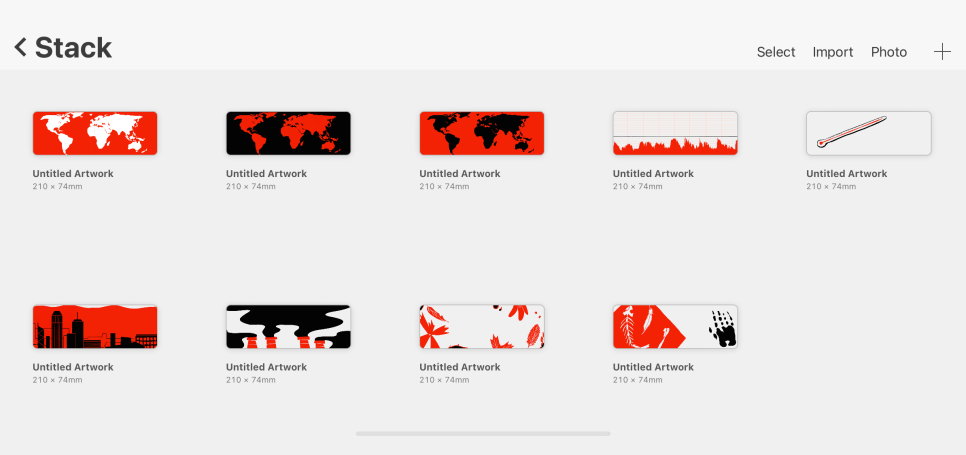
Screenshot of illustrations in
procreate.
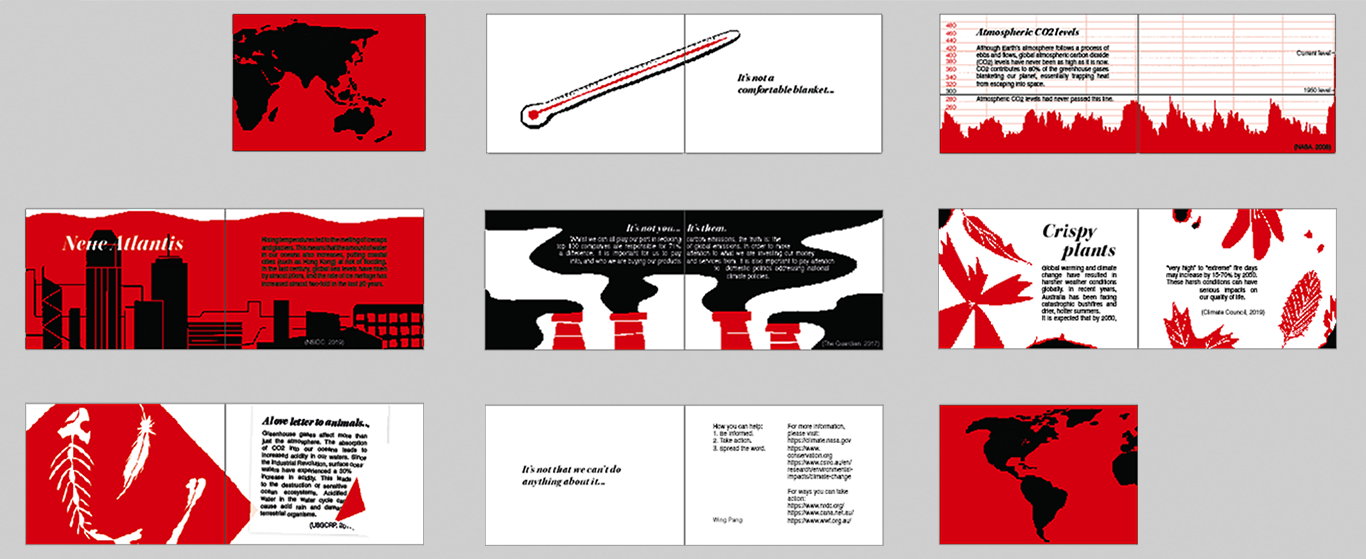
Zine layouts in InDesign.
The final stage of the project involved printing and construction of the zine. This
involved choosing paper stock, binding technique, and print settings. This phase of
the
zine took the most time due to unexpected issues such as paper jams and printer
misalignment. Initial prints of the zine was completed using cartridge paper while
later
iterations were printed on Tomoe River paper. This Tomoe River paper was prone to
slipping and wrinkling in the printer due to its thin and silky properties. It is
only
52gsm in thickness and resembles magazine paper when printed on. As such, multiple
prints were required until the final zine was achieved.
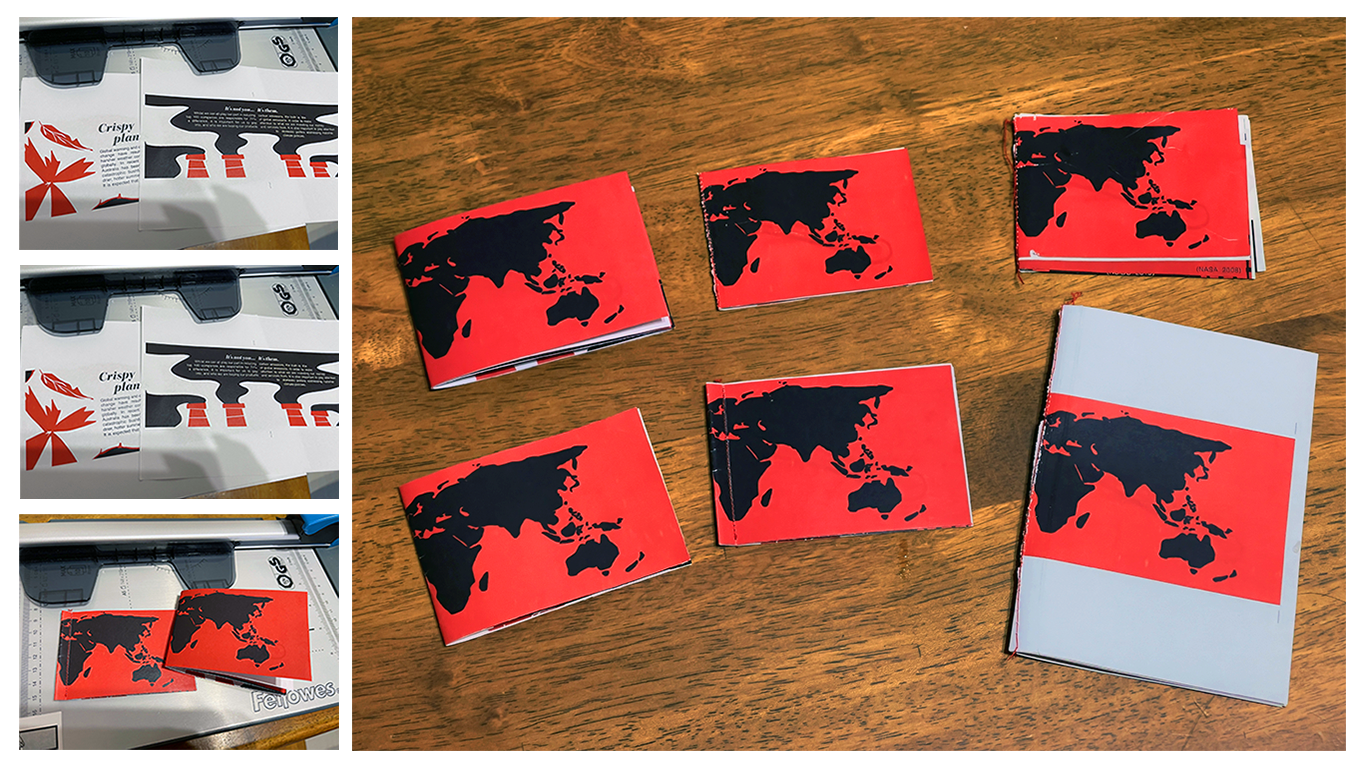
Photographs of the zine
construction process.
- Climate Council. (2019, November 13). The facts about bushfires and climate
change.
https://www.climatecouncil.org.au/not-normal-climate-change-bushfire-web/
- NASA. (2021). NASA: Climate change and global warming.
https://climate.nasa.gov/
- NSIDC. (2019, June 24). SOTC: Contribution of the cryosphere to changes in
sea
level | National Snow and Ice Data Center.
https://nsidc.org/cryosphere/sotc/sea_level.html
- Riley, T. (2018, February 14). Just 100 companies responsible for 71% of global
emissions, study says. The Guardian.
https://www.theguardian.com/sustainable-business/2017/jul/10/100-fossil-fuel-companies-investors-responsible-71-global-emissions-cdp-study-climate-change
- Wuebbles, D.J., Fahey D.W. , Hibbard K.A., Dokken D.J., Stewart B.C. & Maycock
T.K.
USGCRP. (2017). Climate science special report: fourth national climate
assessment (NCA4), Volume I. Iowa State University Digital Repository.
https://doi.org/10.7930/J0J964J6
